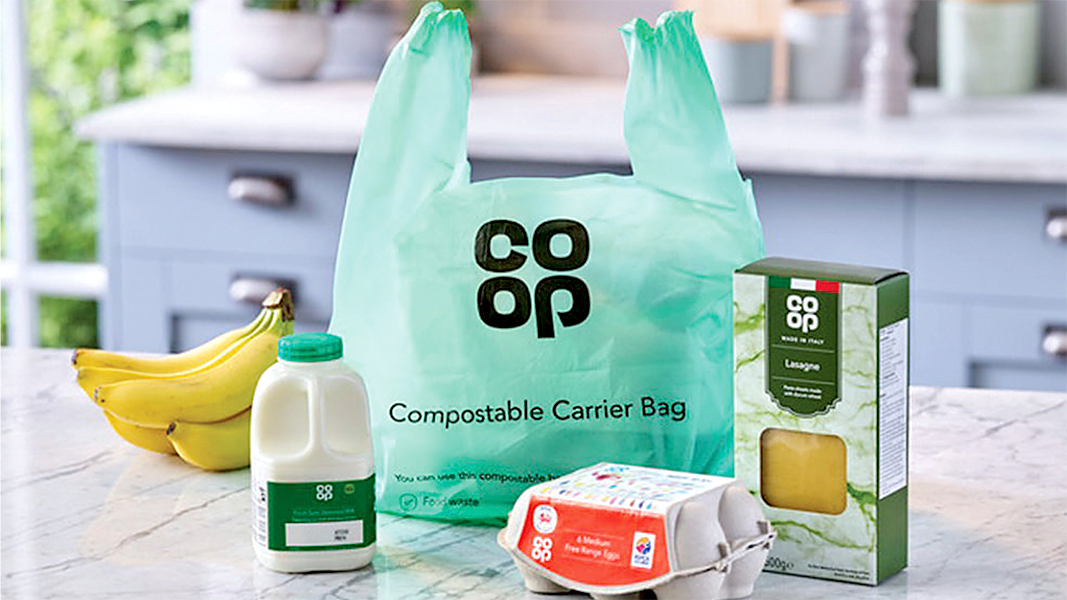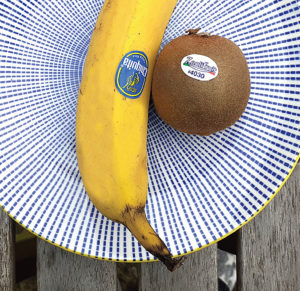Top: Products that should be mandated compostable, notes The Composting Conundrum, include fruit stickers, food waste caddy liners, and carrier bags.
A Plastic Planet, an advocacy organization in the United Kingdom, released “The Compostable Conundrum” report in October to help packaging designers decide when to use compostable packaging and for which products. The document is a working paper to inform and shape a growing number of conversations on plastic pollution and compostable materials. “Clarity is needed on when it is responsible to use compostable materials and when it makes sense to use another material,” says A Plastic Planet in its description of the report, which is based on research from the United Nation’s Food and Agriculture Organization, the Federal Public Service (FPS) Health, Food Chain Safety, and Environment, and scientific journals. “This document is initially designed for the people who choose which materials to use for packaging and products at the very beginning of the process — packaging designers and brand managers. With greater knowledge and understanding of the pros and cons of using compostable materials, this document will have succeeded if there is less ‘misuse.’ No one wants to use a compostable material that ends up in landfill or an incinerator …. Ultimately this document focuses on one issue of concern — the health of our soils. It starts with soil. It ends with soil. Good quality, healthy soils are essential to our survival as a species.”
The Compostable Conundrum opens with this “guiding question” to ask when considering correct use of compostable materials: “’Does this help get food waste into the food waste system?’ If the answer is yes, it is a good use of a compostable. If the answer is no, it is probably not.” Integral to the document is a “Red & Green List” of products that A Plastic Planet recommends should (green list) and should not (red list) be using compostable materials. Green List products are rated by these criteria:
- Carries food, beverage residues, plant waste or soil to composting or anaerobic digestion (AD) facilities
- Too small, flimsy, flexible, multi-laminated and hard to recycle in any other waste stream
- When made of non-compostable plastic, product currently contaminates the biowaste stream
Five categories of products made the Green List: bags; teas and coffee products (e.g., tea bags and coffee pods); labels (fruit and vegetable stickers); food packaging products (e.g., hot ready meal trays, fruit nets, food condiment packets); and products specifically for closed loop environments (festivals) such as catering cutlery, plates, cups, bowls and platters. The bags category includes carrier and lightweight bags, kitchen caddy and food waste bin liners, and light and very light bags for produce (ideally that can be used to line a kitchen caddy).
Criteria used to evaluate Red List products are: carries food waste to composting or AD facilities; easy to compost or anaerobically digest; and can only be made of a compostable material. “Our key criterion is whether the item carries food waste to composting or AD facilities,” explains the guidance. Thirteen items fail and are on the red list (BioCycle has seen promotions for compostable versions of many of these items): pallet shrink wrap, compostable bottles, non-food packaging bags, mailing bags, dental hygiene products, clothing apparel and shoes, wipes (non-food), sheet face masks, foam packaging for pharmaceuticals, personal care and cosmetic packaging, personal care and cosmetic single dose sachets, newspaper and magazine sleeves, and protective packaging for electricals (TV corners).











